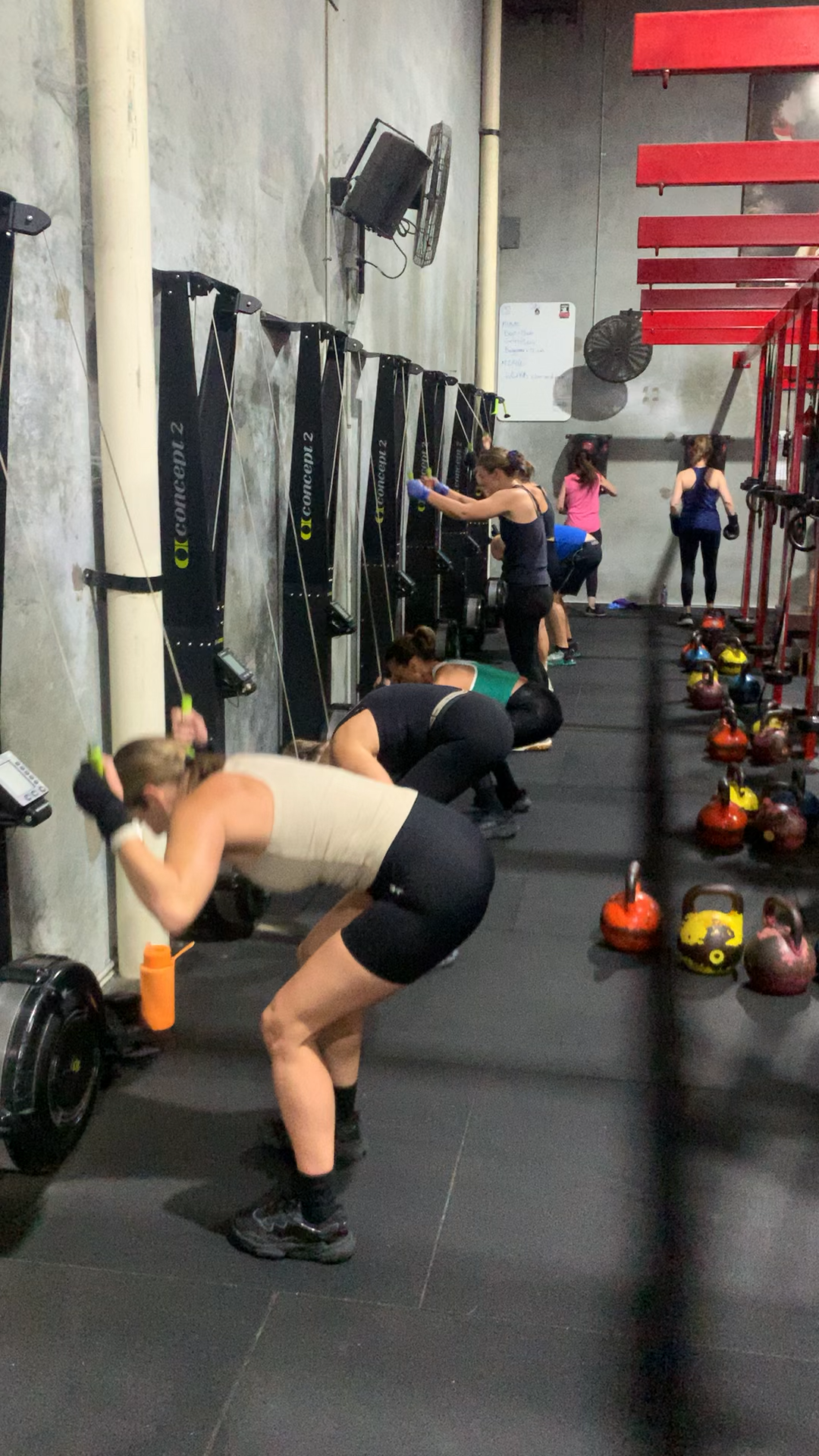Hey Team,
It’s nice to be back from a few days away – I tried to not worry too much about all stuff ‘Round 1’ whilst I was away…and mostly succeeded. It was a great chance to reflect though and this blog (along with a couple of others I banged out whilst down south) is (I guess) all part of that reflection.
As parents, coaches, and mentors, we all want to see our young athletes succeed, but more importantly, we want to see them stay healthy while they grow and develop. At Round 1 Fitness, our Developing Athlete sessions are designed with this exact goal in mind—to build faster, stronger, and, most critically, resilient athletes.
Professional athletes—the very ones our kids look up to—are completing multiple strength and conditioning sessions each week, throughout the entire year. Both in-season and out of season, their training is consistent because they know the value of preparing their bodies for the physical demands of their sport. Unfortunately, we often see young athletes trying to compress an entire year’s worth of training into just a few months. While some training is always better than none, this approach fails to maximize the benefits that come from a year-round program, which is essential for building true resilience and injury resistance.
What else? Well…and this part is a bit harder for me to navigate. Going to the ‘gym’ is 100% a great lifetime habit – but it isn’t what top athletes do. They ‘TRAIN’. They don’t head down to the local 24x 7 and do a bit of chest then a few leg press – really depends what machines are available I guess! – and finish with some curls. Rather they follow a structured program designed to enhance their strength, speed and mobility. I totally get it when kids want to go off and ‘train with their mates’…the thing is, in most cases, their mates aren’t training – they’re doing random stuff in an unsupervised environment…and to what purpose? Well, that part no-one knows! Can I just also add there’s nothing wrong with this in general terms…I mean, they are still creating a great HABIT that will hopefully last them a lifetime – just that they aren’t really helping their athletic development.
In this post, I’ll walk through seven key principles that can help reduce the risk of injury for young athletes, emphasizing the importance of balance, proper nutrition, strength training, and rest. The goal (of course) is to give you practical tips that can help your young athlete not only perform better but stay in the game for the long haul.
1. Redefining Injury Prevention: Aim to Reduce, Not Eliminate
Injuries are an unfortunate reality in sports. While we all want to keep our young athletes safe, it’s important to shift our focus from “prevention” to “reduction.” This mindset change is crucial because, despite our best efforts, accidents and injuries can happen. By acknowledging this, we can focus on controlling what’s within reach rather than stressing over every possible risk. Our goal as parents and coaches should be to minimize risk through smart practices, not to eliminate it entirely.
2. Nutrition and Hydration are the Foundation
We often think of injury prevention as something that happens on the field or in the gym. But it begins at the dining table. Proper nutrition and hydration are critical for keeping young athletes’ bodies functioning at their best. Without the right nutrients, muscles and tendons are more susceptible to strain and fatigue, increasing the likelihood of injury. A balanced diet rich in carbohydrates, proteins, and micronutrients supports performance, recovery, and muscular health. Prioritize meals with fresh fruits, vegetables, lean proteins, and complex carbs. And don’t forget hydration! Dehydration can lead to muscle cramps and overall fatigue, both of which raise injury risk.
Pro tip: Encourage your athlete to carry a water bottle and avoid sugary, processed foods whenever possible – be sure to set a great example for this with your own behaviour. Every little bit adds up to better performance and health!
3. Prioritize Quality Sleep
The life of a young athlete can be incredibly demanding. School starts early, practice might be before or after school, and homework piles up. Despite all this, getting 7-8 hours of sleep each night is essential. Quality sleep allows the body to recover, reduces inflammation, and helps muscles repair and grow stronger. Skimping on sleep makes it harder for athletes to concentrate and react quickly, increasing the chance of injuries. Studies show that athletes who sleep less than 8 hours a night are 1.7 times more likely to get injured than those who sleep longer.
Quick tip: Help your athlete create a nighttime routine that promotes relaxation, like turning off screens 30 minutes before bed or reading a book. Most teenagers these days will NEED a plan to manage their devices after lights out…Quality sleep is key to building a resilient body.
4. Take a Break from Year-Round Play
In the pursuit of excellence, it’s tempting to have young athletes specialize early and play one sport all year (basketball and tennis people out there, I’m looking at you!). However, taking an off-season is essential. Continuous play without a break leads to overuse injuries, burnout, and mental fatigue. Playing different sports or taking a few months off from competition gives the body a chance to recover and develop in new ways. It helps improve motor skills and balance and reduces stress on the same muscle groups and joints. Consider encouraging them to try new sports or activities during the off-season to keep things fun and engaging while building a more versatile athlete.
Pro tip: Taking a break doesn’t mean inactivity. Suggest fun, low-stress activities like hiking, swimming, or casual pick-up games to keep them moving without the demands of competition.
5. Commit to Strength and Conditioning
Strength training is one of the best ways to build a body that’s resistant to injury. During the off-season, young athletes can focus on building strength and enhancing movement patterns. A quality strength and conditioning program can improve stability, flexibility, and control. For example, exercises that enhance core strength help protect the spine and improve balance, which can reduce the likelihood of falls. And while strength training sometimes carries a stigma of being for “serious” athletes, it’s a key tool for all young athletes.
Quick tip: If you’re unsure where to start, consult a coach or trainer with experience in youth athletics. They can design a program that’s age-appropriate, enjoyable, and focused on building lifelong skills.
6. Maintain Strength Training In-Season
Many parents and athletes drop strength training when the season starts, but maintaining it during the season can help sustain resilience and reduce injury risk. Strength training complements regular practice by keeping muscles conditioned, stable, and able to absorb more shock. In-season training doesn’t need to be intense or exhaustive; 1-2 strength sessions per week can be sufficient to maintain gains made during the off-season.
Quick tip: Consider using lighter weights with higher repetitions or focusing on exercises that build balance and stability, like bodyweight squats, lunges, and resistance band exercises…your coach can HELP with this…communicate.
7. Respect Rest Days
In our achievement-oriented culture, there’s a tendency to over-schedule young athletes with additional private lessons, practice sessions, and games. However, rest days are non-negotiable. The body needs time to recover and adapt to the stresses of training. Rest days reduce the likelihood of overuse injuries and help athletes maintain peak mental and physical performance. Ideally, athletes should take at least two days off each week from rigorous physical activity. These rest days can also be great opportunities for light stretching or foam rolling – great habits that will help them throughout their lives.
Pro tip: Encourage your young athlete to take it easy on rest days. Remind them that mental recovery is just as important as physical recovery. A strong body is built with hard work and balanced by adequate rest.
Summary
Injury risk is an inevitable part of playing sports, but there are many ways we can reduce it through smart, consistent habits. At Round 1 Fitness, our Developing Athlete sessions are about more than just getting stronger—they’re about building long-term resilience. The key to injury prevention is not found in last-minute efforts or condensed training windows, but in a year-round commitment to balanced nutrition, adequate rest, strength training, and proper recovery.
Professional athletes thrive because they maintain their strength and conditioning throughout the entire year, and our young athletes can benefit from the same approach. Encourage your athlete to take small, manageable steps toward this balanced routine, and the results will speak for themselves—not just in terms of performance but also in their ability to stay injury-free. The foundation of injury prevention is laid in these daily, consistent practices.
See you in the gym,
Michael.


